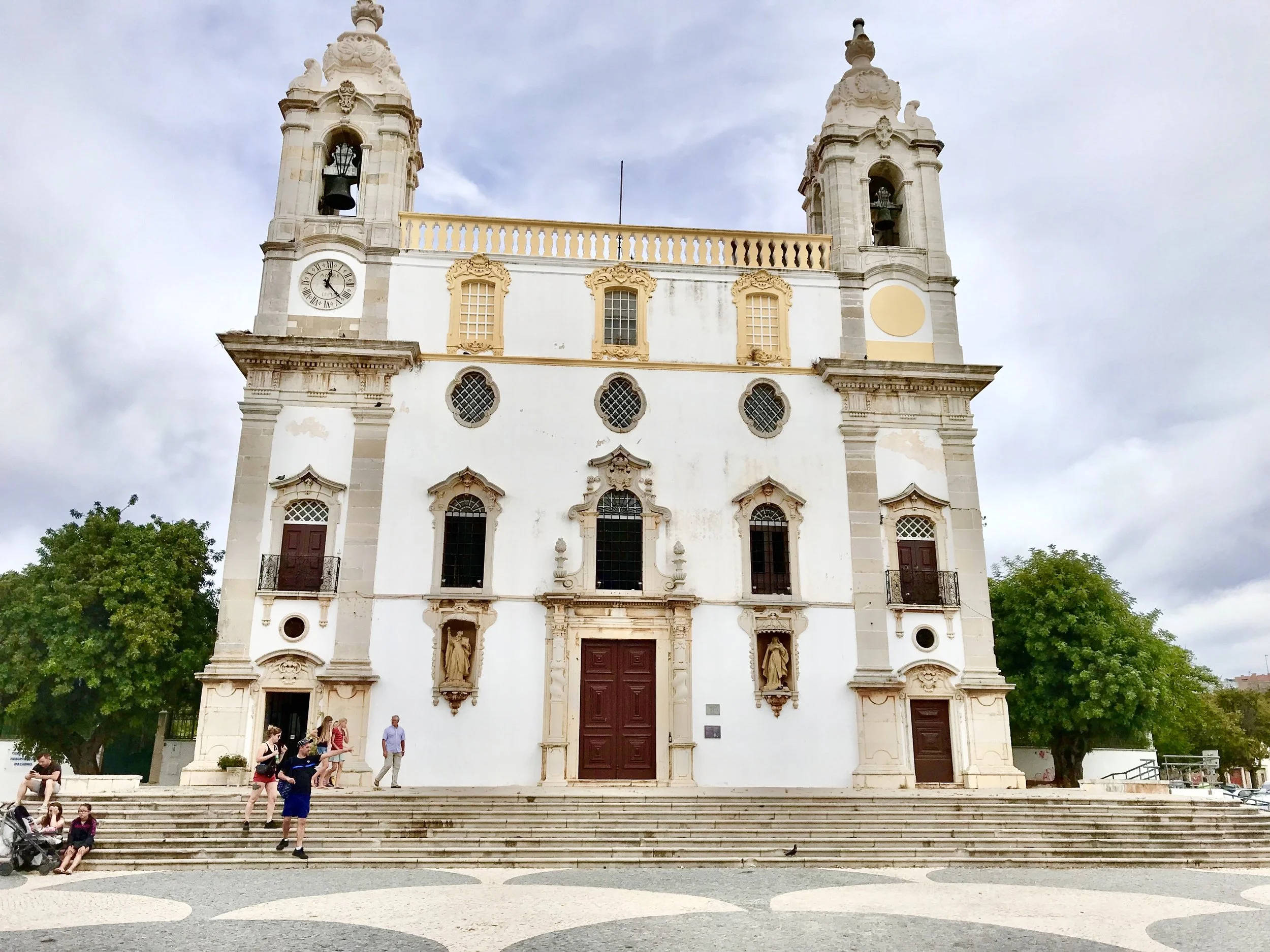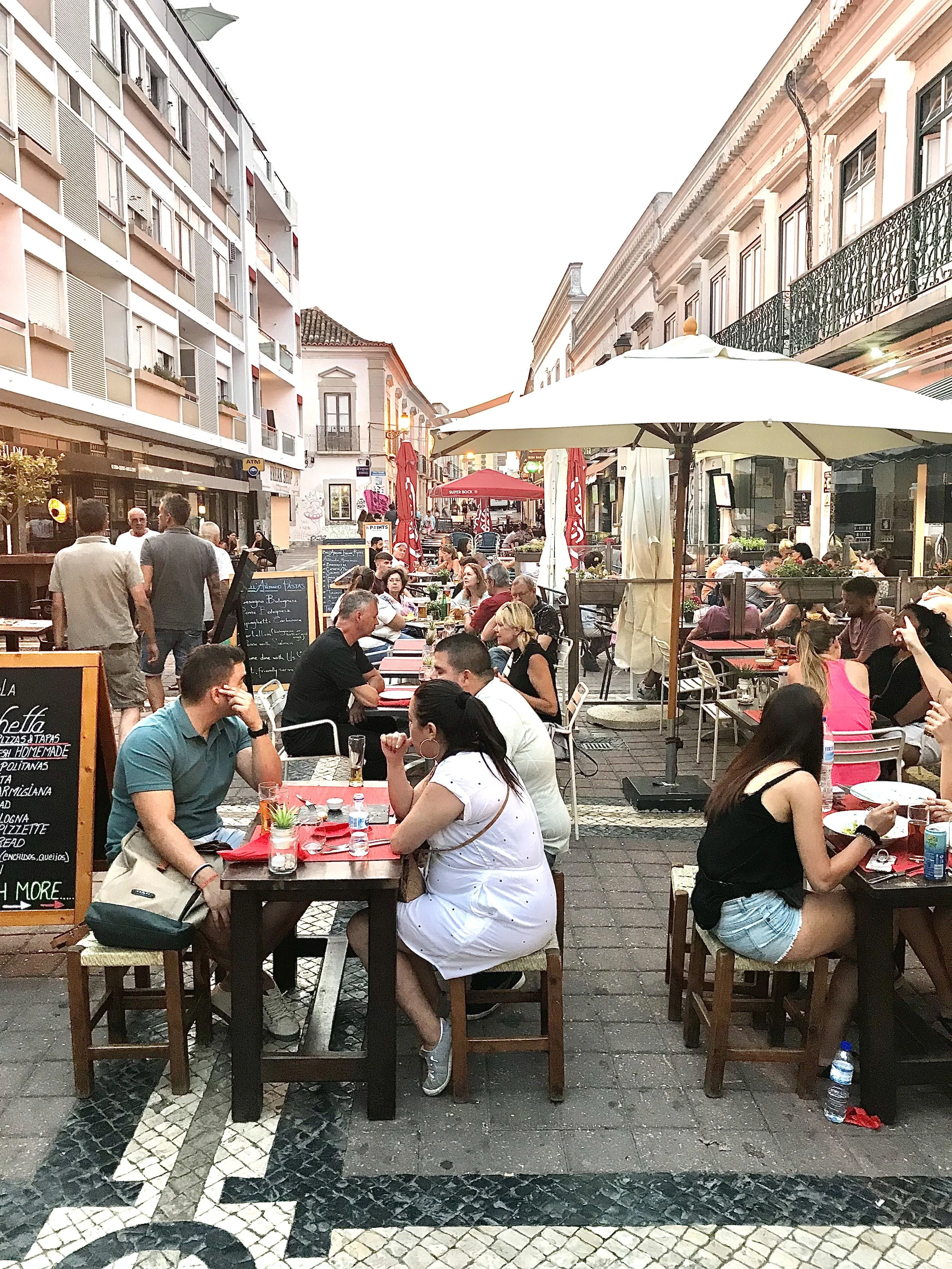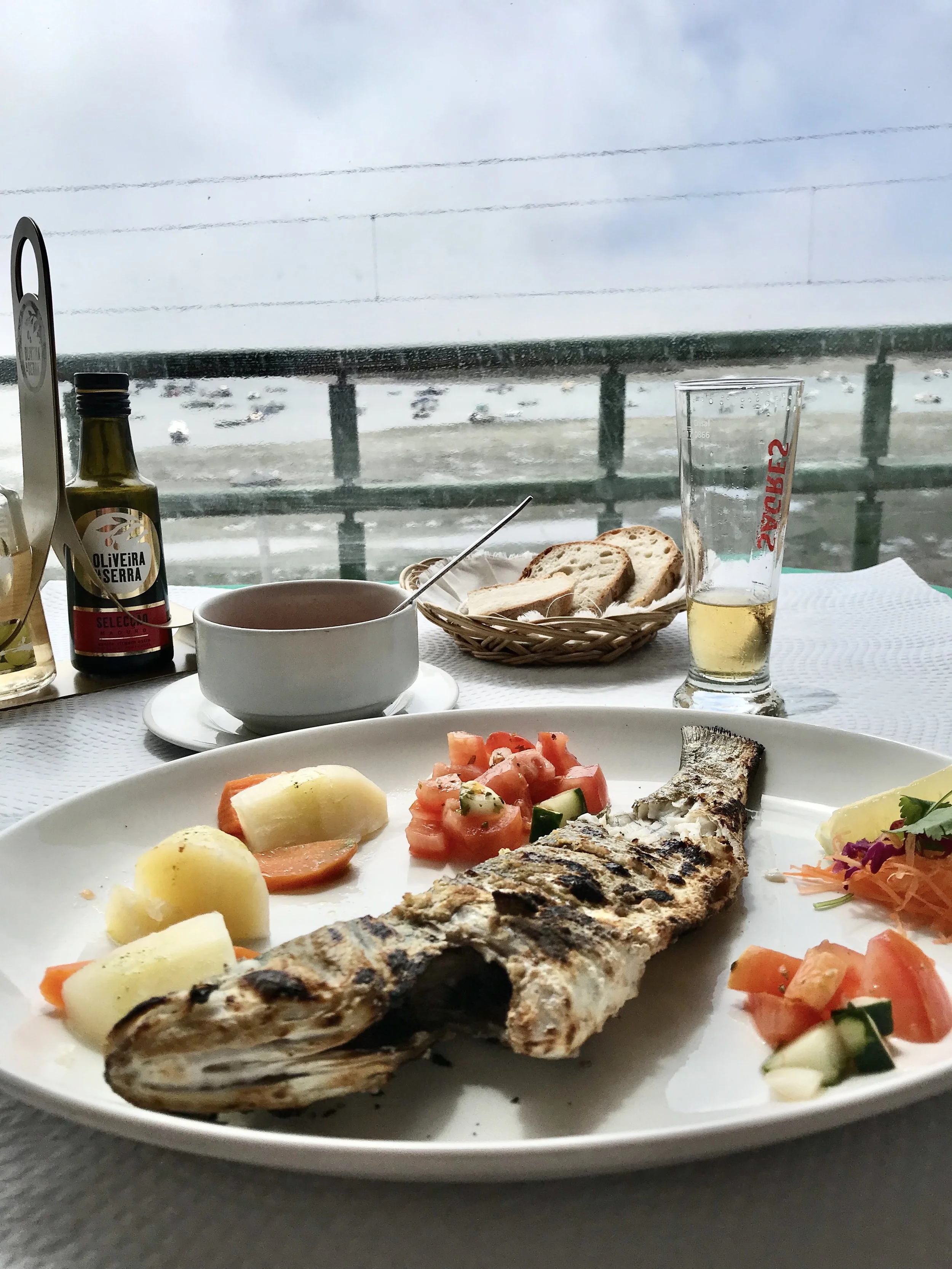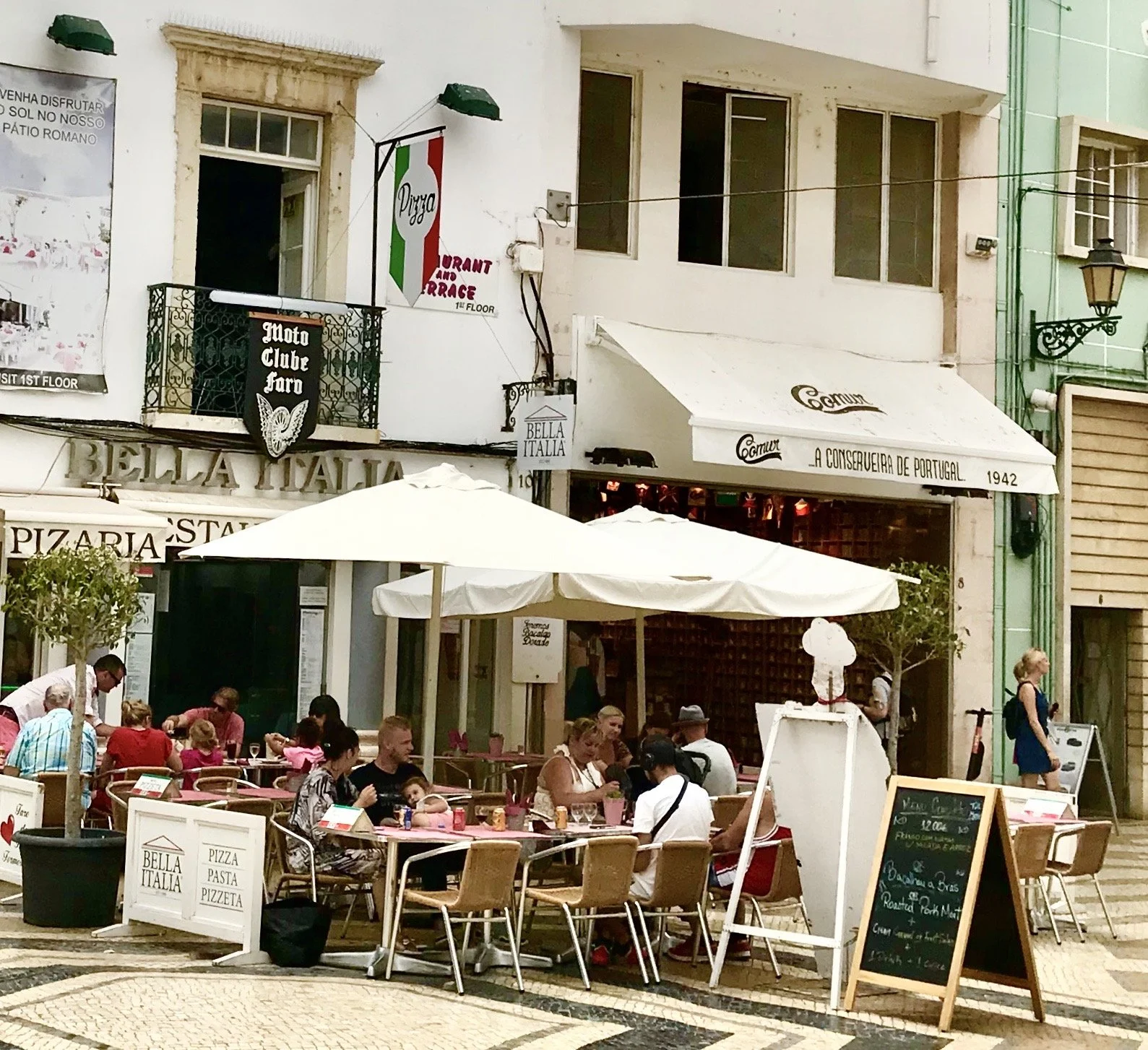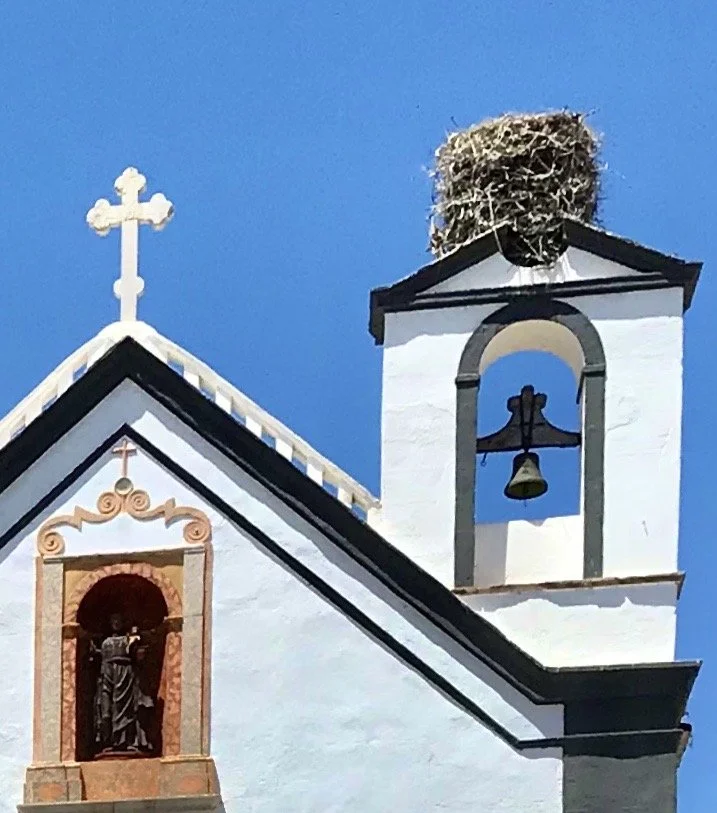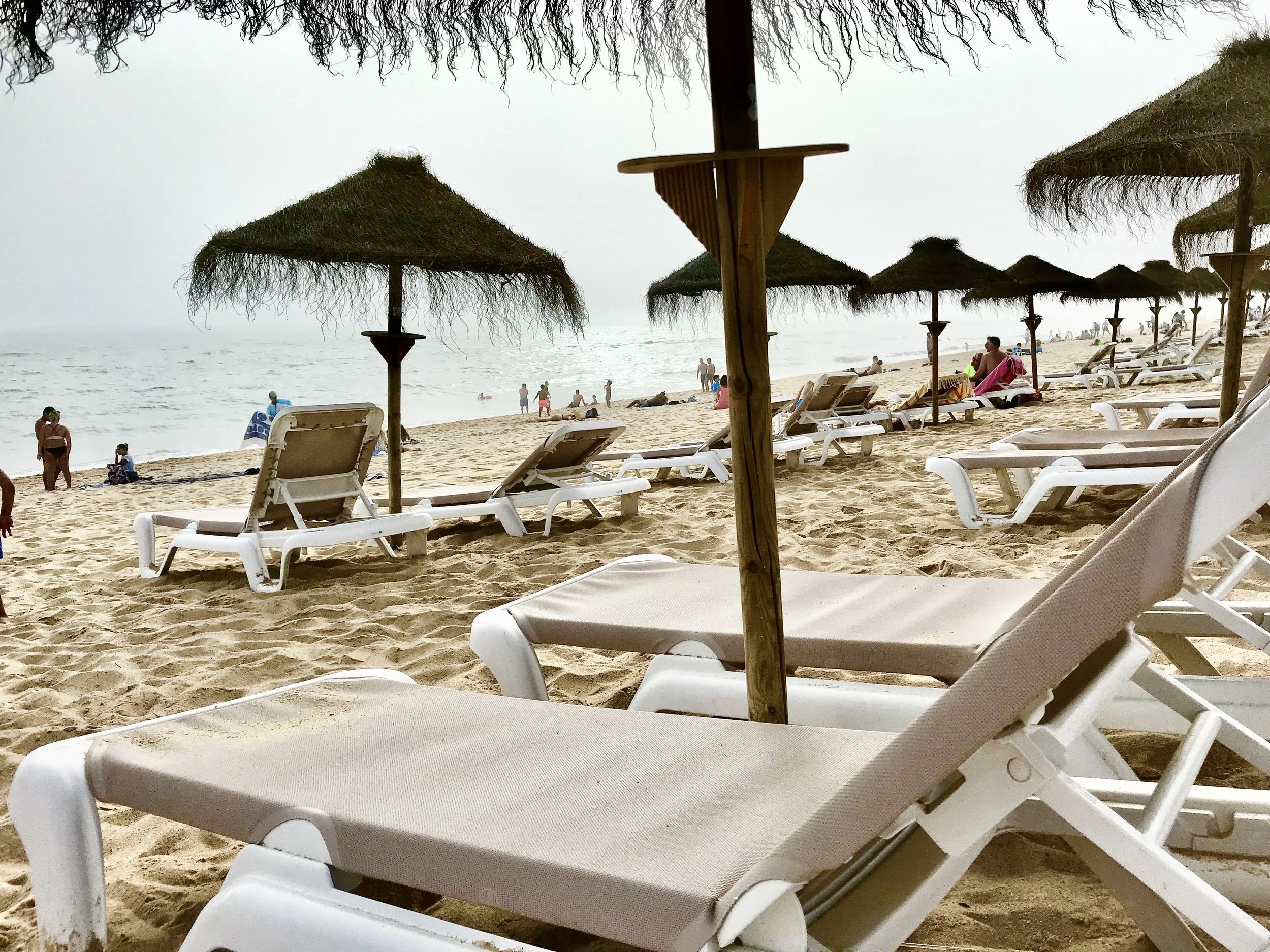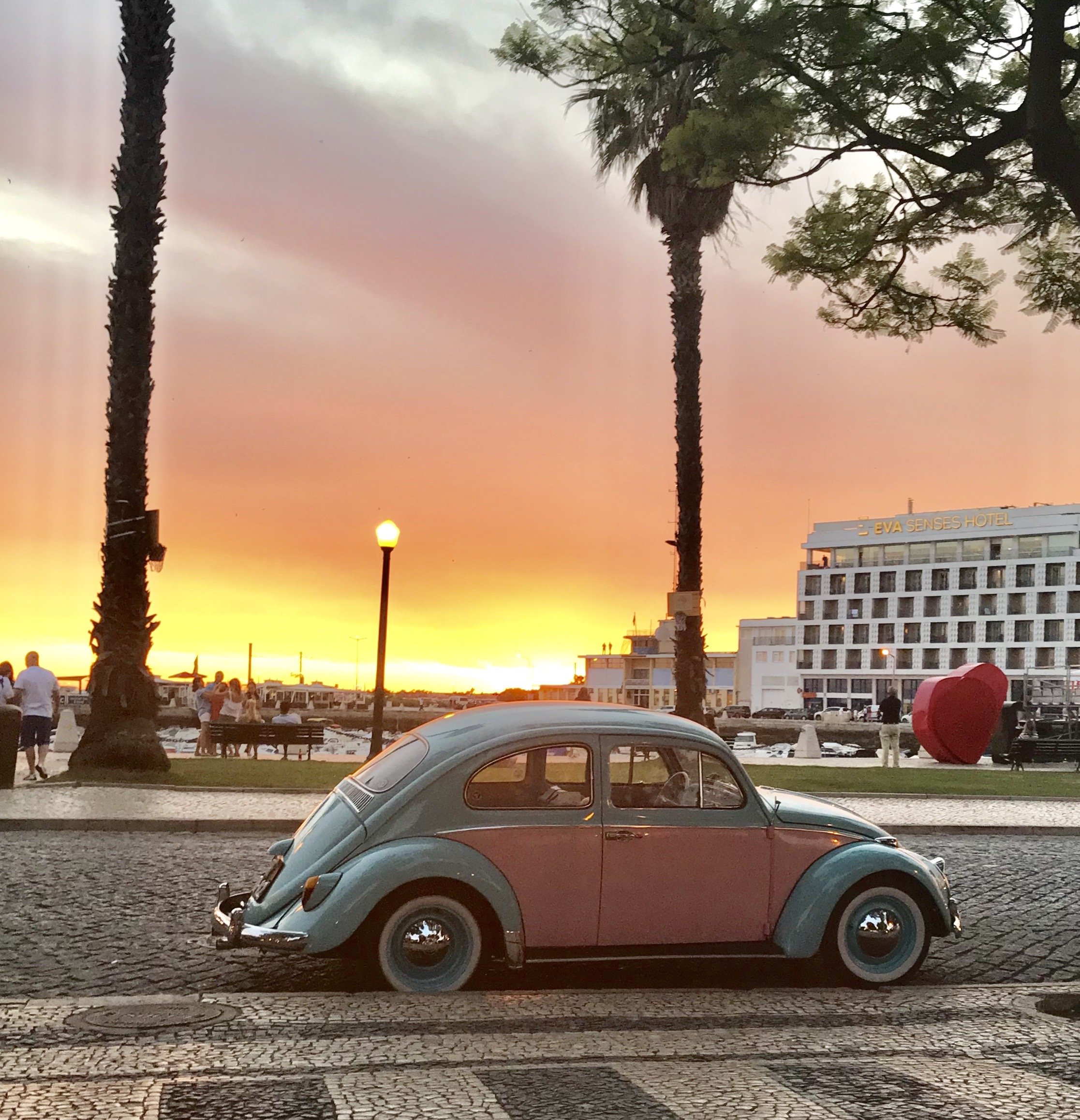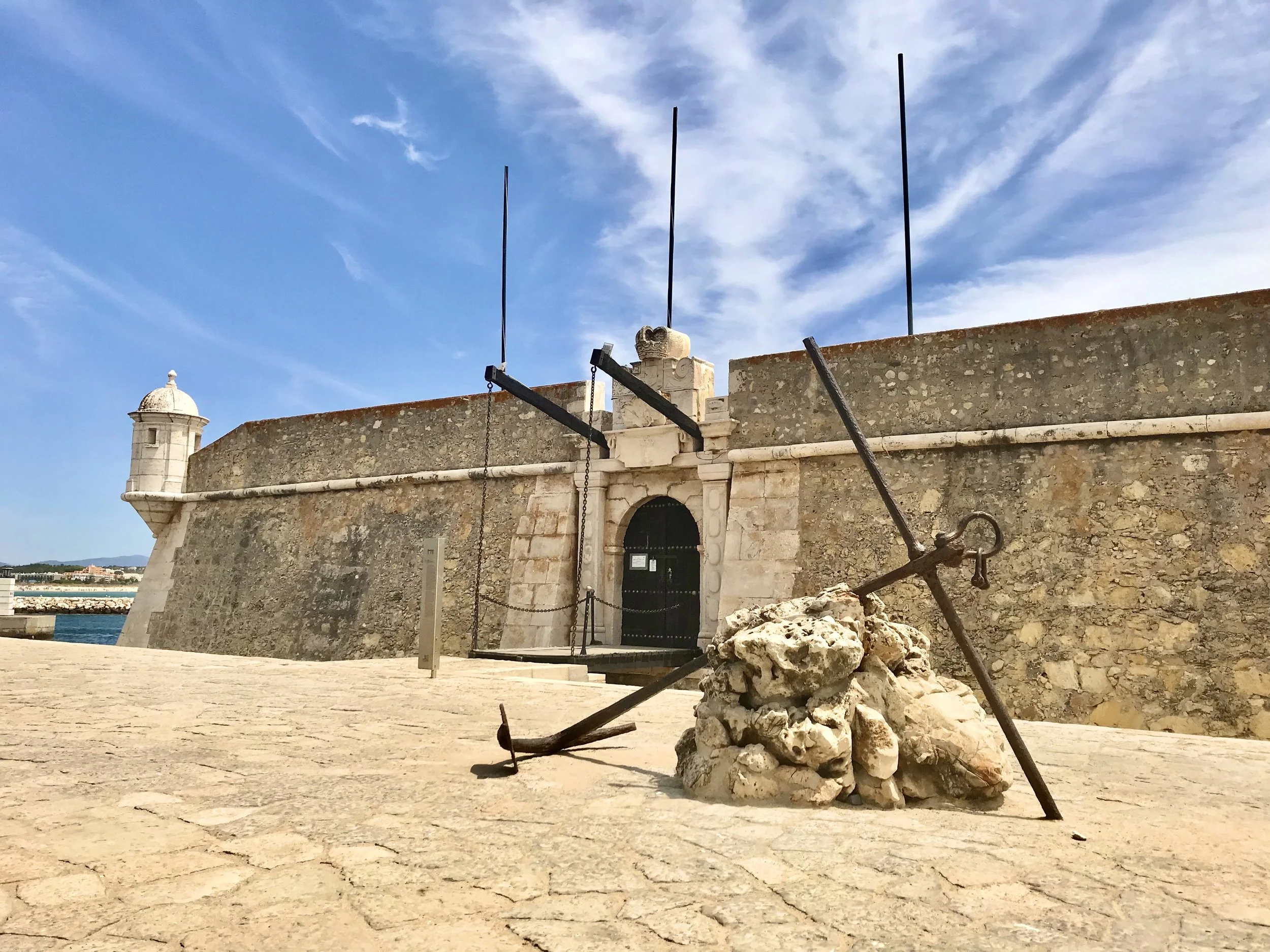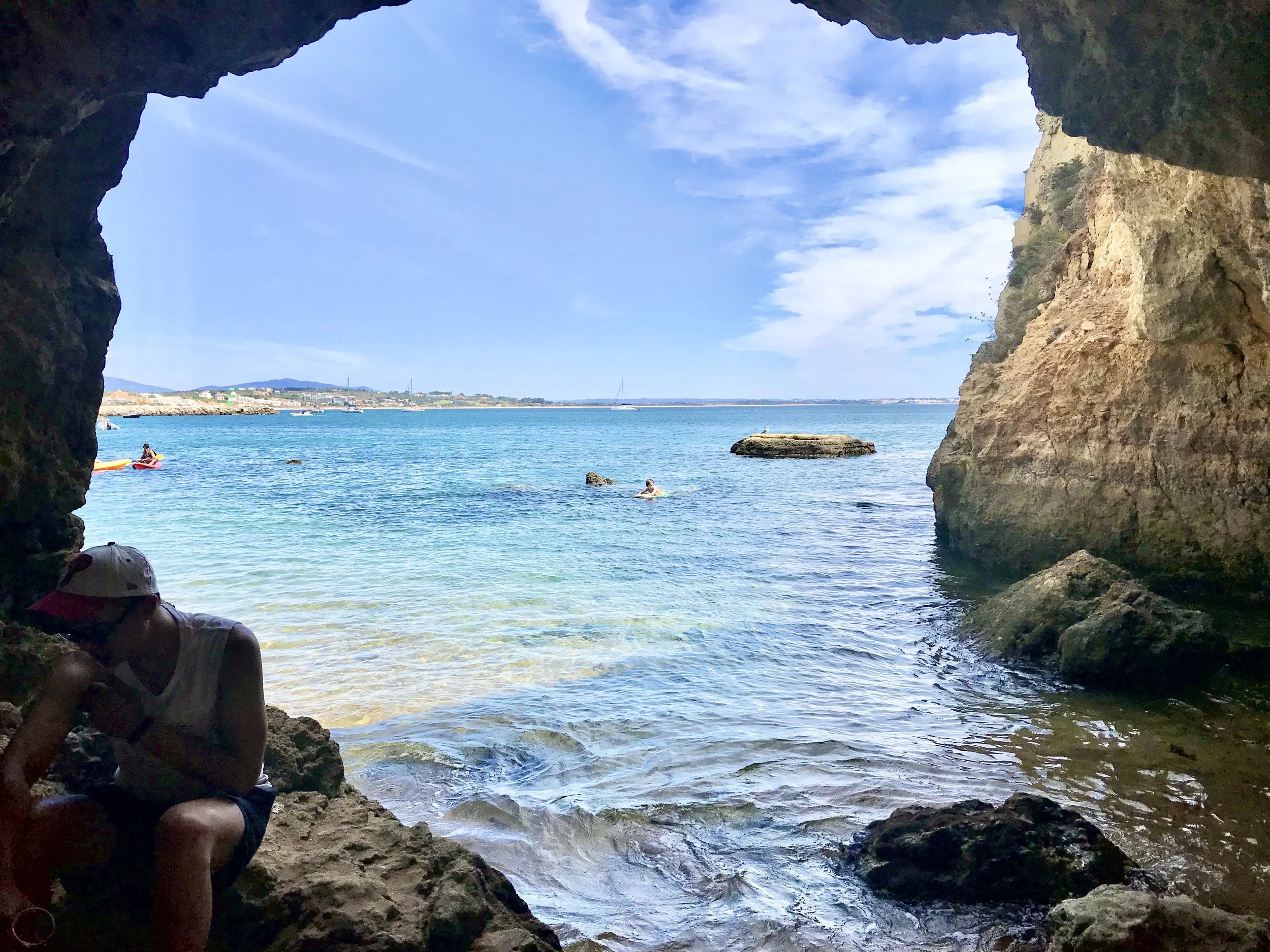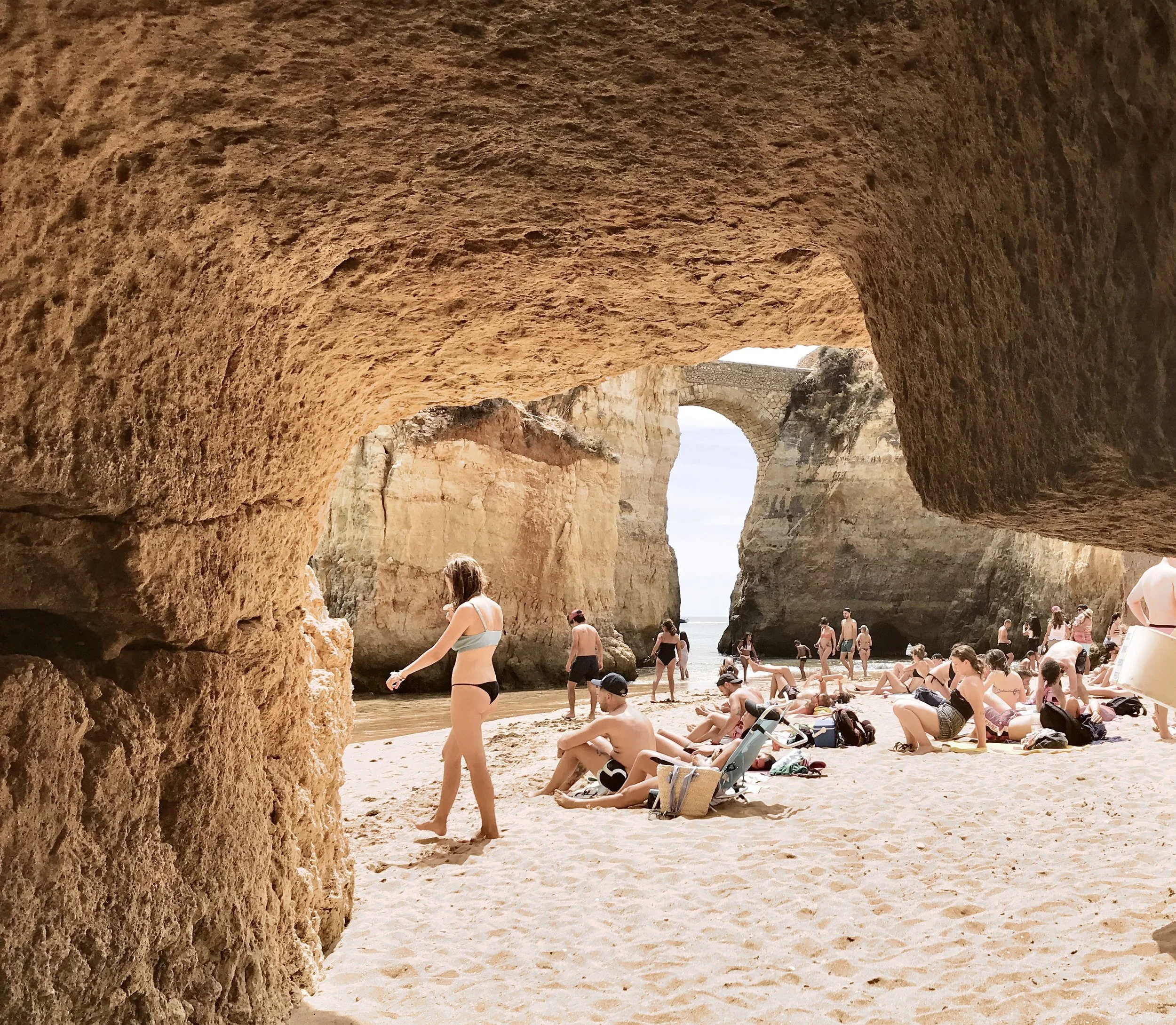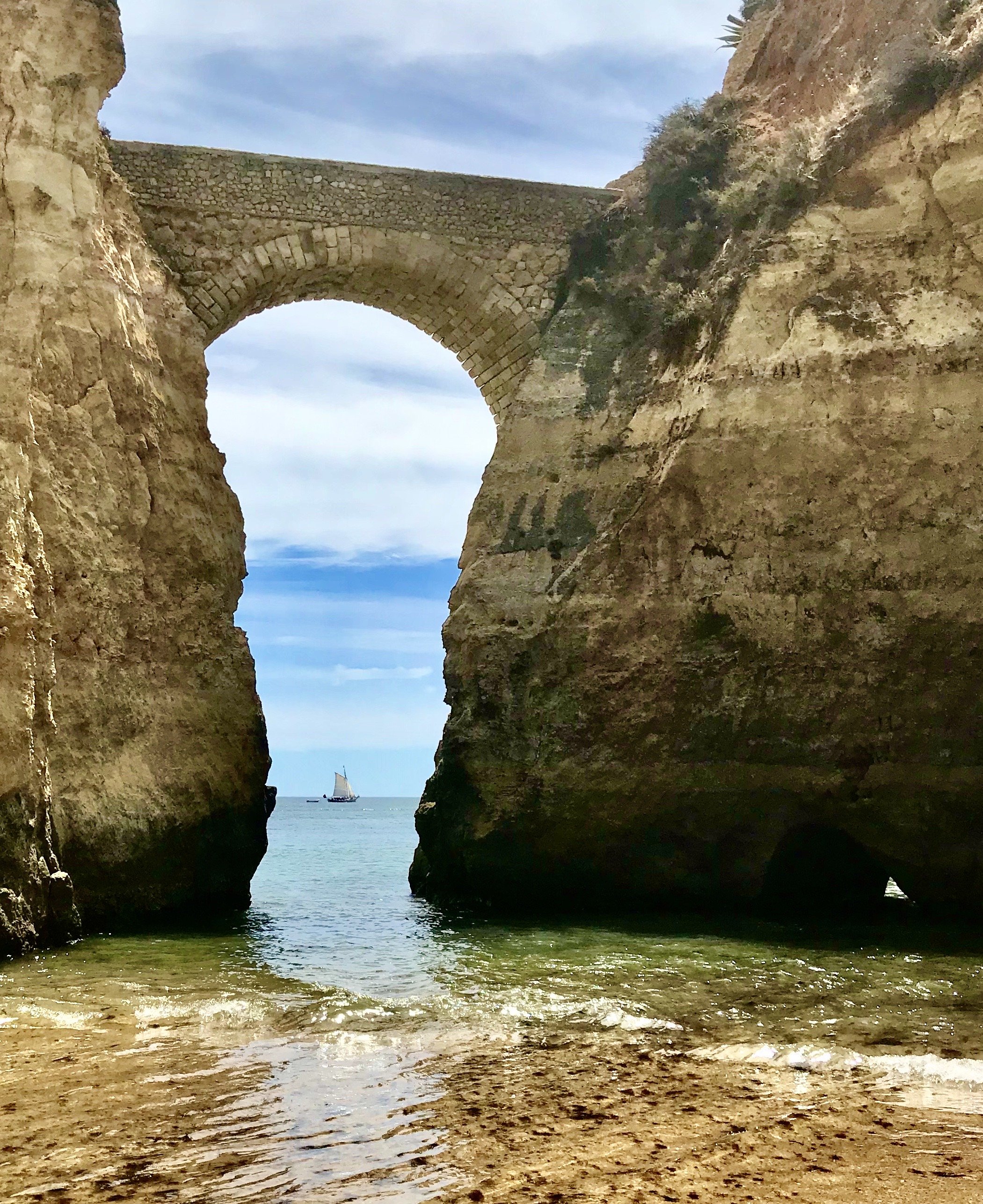Portugal
Part 1: The Algarve – Faro, Tavira and Lagos
Why do people rave about Portugal as a holiday destination? Why do digital nomads choose to work here, and why does it draw retirees as one of the highest-rated retirement destinations in the world?
This newsletter attempts to convey what it ‘feels like’ to visit Portugal. It focuses on Faro, Lagos and Tavira in the Algarve. (Part 2 will take you to Oporto, the mountains near Covilhã and then to Coimbra and Lisbon.)
If you know me personally, or have read my book, Going Solo, you’ll already know how infatuated I am with Portugal as a destination that’s well-suited to solo travellers or to anyone looking for that magic combination of culture, history, art and architecture, friendly people and arguably the best cuisine on the planet. One of its main attractions is that it’s easy on the budget, and for those intending a more permanent stay, the healthcare, tax and visa requirements are very favourable, and, of course, there’s plenty of sunshine, castles, ancient ruins and music.
It’s great to watch – and even participate in – Portugal’s many festivals. Then there are those varied and magnificent landscapes – from impressive mountain ranges in national parks (Serra da Estrella, above Covilhā) to warm sandy beaches with your choice of calm waters (Lagos) or world-class surfing conditions (Nazaré). It’s easy to get around the country. Cities are connected by modern, well-maintained freeways, towns have an abundance of taxis, and most are also serviced by buses, many by trains, and in large cities like Porto and Lisbon, it’s a joy to ride the iconic trams that rattle along the narrow streets. I’ve used the airports at Lisbon, Porto and Faro, but you can also take the train from Faro to Porto. Each airport was easy to negotiate and the town centres of Lisbon and Porto easily reached by train and in Faro it’s a quick cab ride. The Algarve coastal towns are connected by rail, and by bus.
(See reference suggestions at the end)
Images: map of Faro; the marina; paved pedestrian malls, textural skeleton of a former home, Faro’s most prominent church: a hundred skulls of past clergy stare into infinity; a late lunch on Faro’s main pedestrian drag
Faro
Although Portugal is rated as the ‘number one retirement’ and great holiday destination, I was in Faro to answer one question, was the Algarve suitable for me for a three-month or longer stay in terms of community, interest, food, climate, transport options and affordability. The answer for Faro, Lagos and Tavira was a definite ‘yes’ although before making a decision, those interested should explore the smaller towns a little further from the coast, especially Loulé.
An early morning walk in coastal Faro near the marina and along the paved pedestrian precinct is a delight. The two-tone mosaic pavers are a little reminiscent of ancient Roman floors. The tiles are smooth with a satin sheen washed clean at sunrise. The only sounds one hears are birds and the muffled hum of the road cleaner moving away. All else is asleep. By nine, most restaurants have put out their tables, chairs, and umbrellas, and these quickly fill with dozens of diners looking for their caffeine fix and breakfast.
One of the many delights of strolling around Faro is photographing the variety of architecture and the commemorative plaques on many street corners that depict pivotal events in Portugal’s history in beautifully painted blue-and-white-tiled panoramas. Many buildings are also clad using these decorative azulejo tiles, introduced to Portugal by King Manuel I after his trip to Seville in 1503. The roofs of many churches are also decorated, not by humans, but by storks who’ve used their own architectural skills adding height to church turrets – a reassuring sign that some wildlife can still make its presence felt and thrive in harmony with our human-built environment.
Images: wrought iron used to great effect; traditional Portuguese lunch overlooking the Mediterranean; alfresco dining; stunning architecture; one of hundreds of souvenir stores; a church being maintained with loving care; one of many tiled street plaques recording the nation’s history
The Museu Municipal de Faro tells how the region was first settled in prehistoric times and later governed by the Phoenicians and Carthaginians before coming under centuries of Roman rule during which they developed Faro into a busy port city that they named Ossonoba. There are images of nearby Milreu, showing spectacular Roman ruins. Times were often volatile around the Mediterranean. Germanic tribes invaded from the north in the fifth century, coinciding with – and partially contributing to – the eventual fall of the Roman Empire. In the early eighth century (711) the Moors, a complex mix of Islamic Arabs and Berbers from the African continent, easily conquered the unruly and disorganised Iberian Peninsula – Portugal and Spain – and ruled the region for almost six centuries, (in Portugal until 1249) when their last stronghold in Faro was seized by the catholic King Afonzo III.
The Moors had brought much of their culture, their knowledge of mathematics, astronomy, science and engineering. The exquisite architecture that remains tells the story of their engineering genius, spirituality, and refined sense of aesthetics. However, much of this was destroyed during and after the Reconquista. Many of Portugal’s current churches and cathedrals stand on the sites of mosques. While the Moors, to their credit, tolerated religious freedom during their rule, the Catholics exiled both Muslims and Jews. Despite this expulsion, the Moors are credited for bringing classical learning back into a Europe that had, prior to their arrival, sunk unto the Dark Ages.
By the beginning of the eighteenth century, Faro had blossomed into a splendid city with fine examples of heavily decorated Baroque architecture. The Sao Francisco and the Igreja do Carmo Baroque churches are prime examples of this building style. The wealth to build so extravagantly throughout the nation from the sixteenth century onwards came mainly from gold and silver extracted from Portugal’s colonies. At the time, Portugal was a powerful seafaring nation, one of the wealthiest in Europe. However, the earthquake of 1755 that destroyed much of Lisbon and Faro’s architecture, also damaged these churches. While their interiors were spared, the exterior required reconstruction after the quake. A Neoclassical style was frequently chosen for the post-earthquake restorations.
Faro sprawls out from its centre to be one of the largest cities in Portugal’s south. It’s the capital and business centre of the Algarve region and as such, it’s a touch more formal than its neighbour, and former Algarve capital, Lagos which boasts lovely beaches. Of the other towns in the area, Albufeira is famous for its nightlife, while Quinta do Lago is where the rich and famous stay; and the charming towns of Loulé, Silves, Sagres, Tavira and Vilamoura are all worth a visit, especially by those intending long-term stays as they are quaint, with a village atmosphere and some have organic farmers’ markets. Best of all, are their affordable long-term rentals.
Images: Baroque architecture and interior grandeur; storks have added height to almost every church; King Afonso’s 13th century defensive wall against the Moors; quiet back lanes; the vibrant marina hosting a rock concert; Faros’ beach – a long way from town and not as popular as Lagos
Later in the evening, the pedestrian malls (quieter during the day) become hives of activity – it’s local dinner time. The aroma of delicious-looking dishes being served to outdoor tables will soon have you seated amid dozens of diners enjoying this convivial atmosphere. If yours is a table for one, you can choose to either regret your solitude or allow only the positive – the happy chatter, vibe, and smiles around you – to seep into your consciousness and add to your feeling of well-being. In case there really is no one to chat with, solo travellers, like me, sometimes take something to read, or can be seen working on their laptop or just watching the world go by. Whichever is the case, I’ve learned to really appreciate dining mostly alone, and each year, I see more women travelling solo and doing the same.
Relaxing in their local park seems to be a favourite pastime in Faro. Under shady trees in a park near Faro’s library, locals are chatting on benches and sharing food. Many seem to be grandparents playing with young children – some chasing balls, others playing hopscotch on squares scratched into the beige gravel of the path. Their laughter fills the air, while several strutting peacocks make colourful photographic subjects when the electric blue of their feathers catches the sunlight and instantly illuminates them. Everything is so sensual in the Algarve; the salty breeze, the fragrance of lavender, and people with their friendly faces – all become etched into memory.
Close to midnight, people tend to stroll along Faro’s lanes. They nod and smile as they pass – the friendly Portuguese mindset is contagious. The breeze has blown the day’s heat out to sea, and there’s a palpable feeling of benevolence in the Algarve that makes one feel welcome and safe.
Images: sunset at the marina, a lane hiding a fabulous antique shop, classical architecture, tile-clad shop-home combo, wrought iron features large in Faro, the texture of rusticity, peacock in mid-decision, Faro’s lovely public library
Tavira
This pretty town is easily reached by train. It’s aesthetics are reminiscent of Greek islands; the houses whitewashed with red terracotta roofs. So narrow are the cobblestone streets that fellow pedestrians and I were soon huddling against the walls of shopfronts as a Mercedes with foreign plates unwisely forced its way down passages that had donkeys in mind when built. As in Faro, many historical buildings were destroyed and rebuilt after 1755.
Luminescent under an intense Mediterranean sun, the buildings contrast blindingly against a cloudless blue sky. Souvenir stores line the bank of the Gilao River which flows right through the centre of this seaside town. They’re filled to bursting with every conceivable product made from cork and the gift-wrapped canned sardines that have become synonymous with Portugal. In the absence of much traffic or industry, only a wisp of salt seasons the clean, fresh air. An ancient Roman footbridge leads to the region’s largest church; the Santa María do Castelo, considered to be the most significant and impressively decorated church in southern Portugal. Inside, there’s a sense of absolute peace. Soft classical music plays through quadraphonic speakers while visitors are surrounded by an impressive, gilded world of paintings, statues and intricate stone masonry. I imagine those artisans and their employers joining forces based on their belief in omnipotence. At the same time, I’m aware that this is also a symbol of one ideology’s dominance over another, not only here but in colonies across the oceans, where resources were ‘harvested’ to fund such a construction. The church stands on the site of a mosque. Such contrasts – are my muse, sharpening my perception and defining my values to help me make choices and to make sense of the world. Travel is a catalyst for this.
Images: The landscape between Faro and Tavira; a peek behind the tourist precinct; opulent Santa Maria do Castelo; blinding whitewash against a brilliant blue sky (in case you’re wondering - my phone went dead in Tavira, so these are my only pics :-(
Lagos
A two-hour train ride west of Faro, lies Lagos, a holiday destination with lovely beaches along a shore that features grottos and impressive rock formations. From the train station, it’s a short walk to the pedestrian mall in the town’s centre. The main square is surrounded by galleries, boutiques, souvenir stores, and the season’s wall-to-wall tourists. It’s a lively and colourful place with music playing on every second corner, street artists performing magic tricks, and dining tables spilling out from dozens of restaurants. I see many tanned bodies among the happy diners, all dressed for the inviting beach – only a stone’s throw away.
Images: Lagos’ coat of arms; statue Lagos’ famous son: Gil Eannes – maritme explorer; Igreja de Santo António; colourful mural in the main square
Lagos abounds with a variety of lovely restaurants. Seated at a Moroccan Café and enjoying a colourful salad, I let my imagination run wild and make up stories about the very Moroccan-looking man seated at the next table writing on a notepad. I imagine him as a Moorish engineer calculating the mathematics for the towns’ water supply. A trick when travelling solo that keeps me amused between conversations is to paint mental portraits of anyone who captures my interest. Imagining their life stories is a fun exercise for a writer. It’s all nonsense, of course, but it does make me more observant and ‘present’ in my immediate environment while also shifting my focus away from the fact that I’m travelling alone. It’s one part of the armour that protects against the mere possibility of loneliness, much like time spent sharing one’s experiences by sending messages, photos and travel videos to friends and family back home.
Images: The Moorish Castelo de Lagos; Mercado de Escravos; sailing boat for group hire; Forte da Ponta da Bandeira
Across the road from the seventeenth-century Forte da Ponta da Bandeira – built to defend the town against naval attack – stands the Moorish fortress, Castelo de Lagos. From the top, there are magnificent views of the sea and the town’s terracotta-capped, whitewashed buildings including the Mercado de Escravos, which was the site of Portugal’s slave trade. Although previous civilisations, such as the Romans, also relied on slavery to help build and maintain their empires, the 1444 slave market of Lagos is considered the first in Europe. Slaves were captured in Africa and then sold here with many of the annual eight hundred, then shipped to the Americas to work on sugar cane and tobacco plantations. The others were enslaved in Portugal – the men in fishing and the women in domestic service. Like Britain, Portugal’s economy depended on such exploitation. Slaves were used as currency to accumulate gold and silver from the Americas and spices from the East. However, Portugal started long ago to openly recognise its grim past, while other nations are still burying their collective heads in the sand. That recognition is the focus of the building’s exhibition. It reminds visitors that the wounds caused by the inhumane trade in human lives are not yet healed for the tens of thousands who carry this legacy, nor for the victims of the tragic and shameful human trafficking still carried out today.
On my last night in Lagos, I searched for bar with live music and found one with a band playing on handmade instruments and dressed in Mexican outfits. Reverberating percussion and the audience’s exuberance had everyone stomping and clapping to the rhythmic music that’s so loud we’re all in danger of bringing the ceiling down. That was a fun way to celebrate a last night in a place where I’ll always remember feeling happy and content.
Images: Lagos’ stunning shoreline; water sports on offer; beach grottos; outdoor dining - Lagos style, and my Moroccan-looking neighbour
On leaving the Algarve for the airport, the cab driver asks where I’m headed. In response to my itinerary he says, ‘I don’t like cities, Oporto and Lisboa are too busy. I’m a mountain man. I would give anything to walk in the beautiful mountains near Covilhã, but I need to drive this cab. One day,’ he sighs, ‘one day.’ The driver’s yearning to hike in the mountains and his financial inability to do so leaves me feeling grateful for the opportunities I’ve had to make this and all my other journeys. Occasional nudges into an awareness of my good fortune make me pay closer attention to the rewards each travel experience offers.
Coming soon; Portugal Part 2: Oporto, through the Serra da Estrela National Park to Mt Torres via Covilhã, Belmonte, Coimbra and Lisbon.
References for Portugal: Check out these online Forums’: Tripadvisor’s, Fodor’s, Rick Steves’ and look at ‘Expats in Portugal’ and ‘International Living’. There are lots more!!







